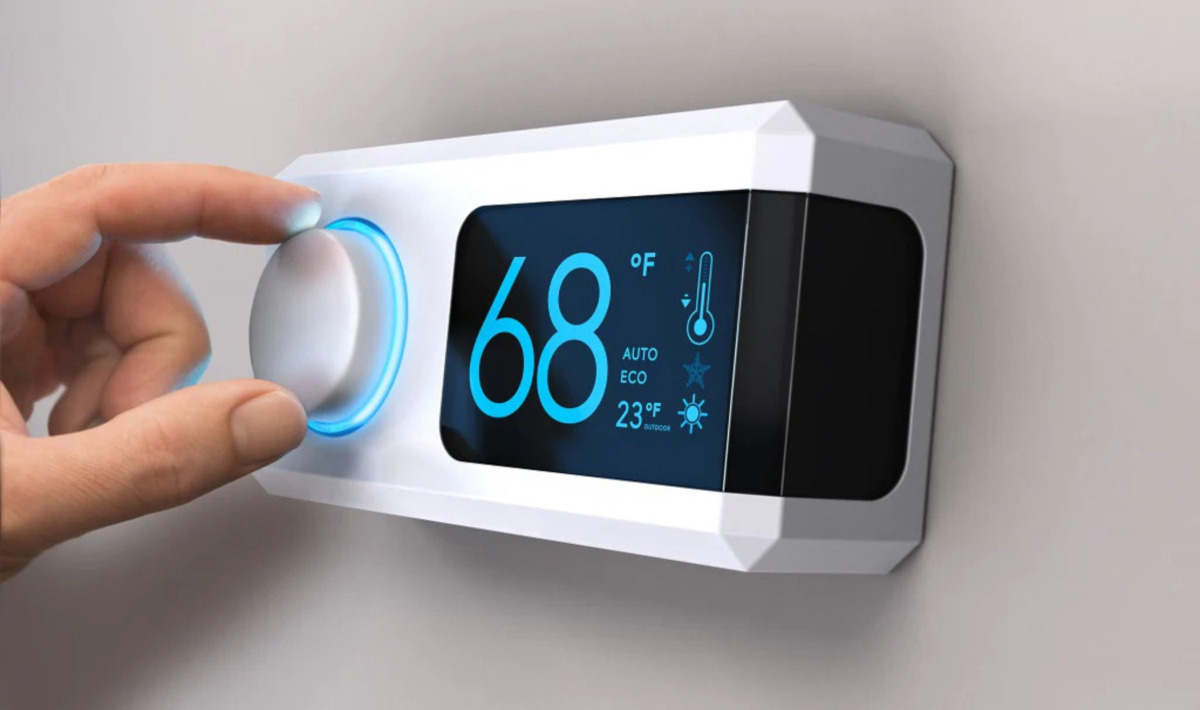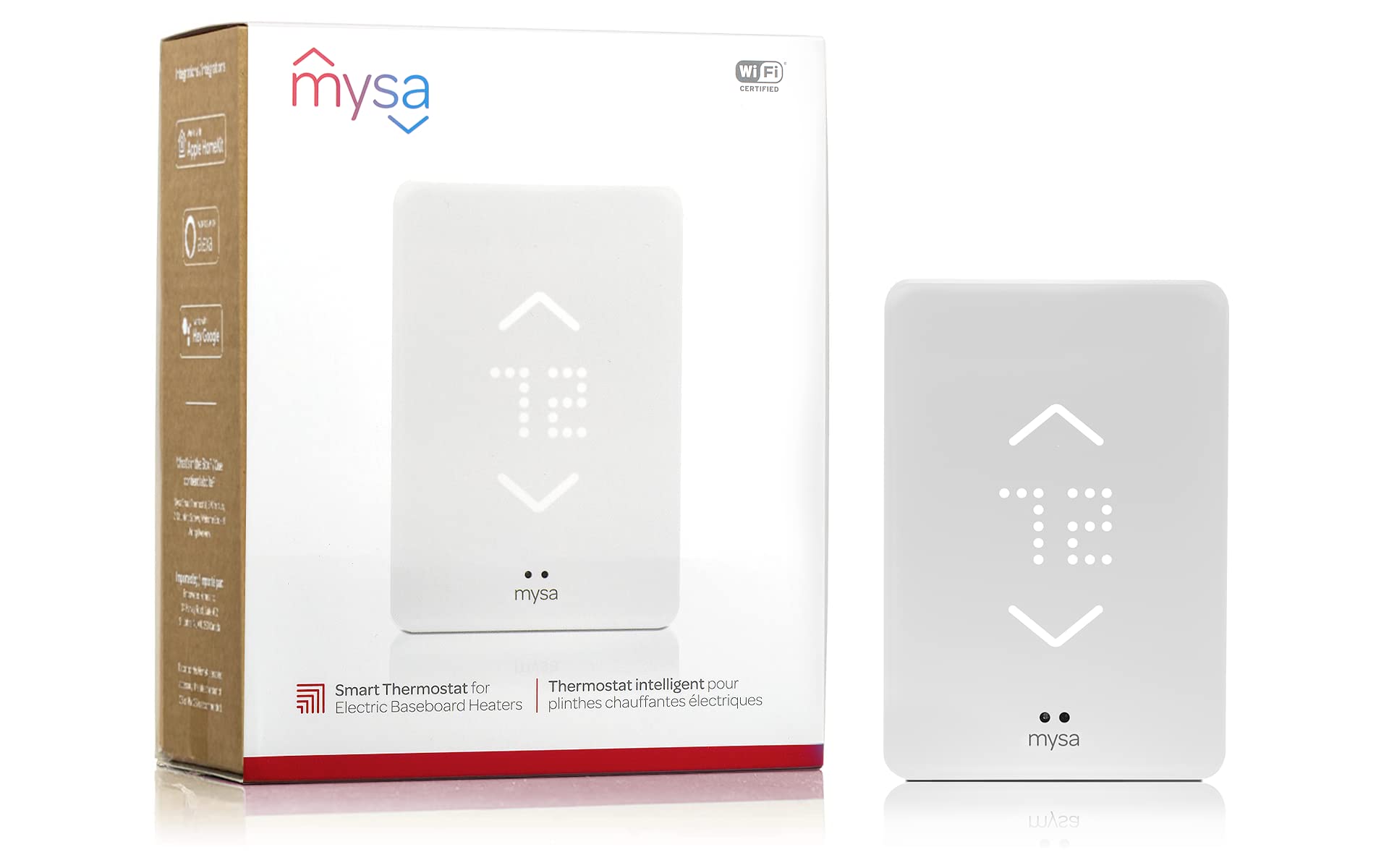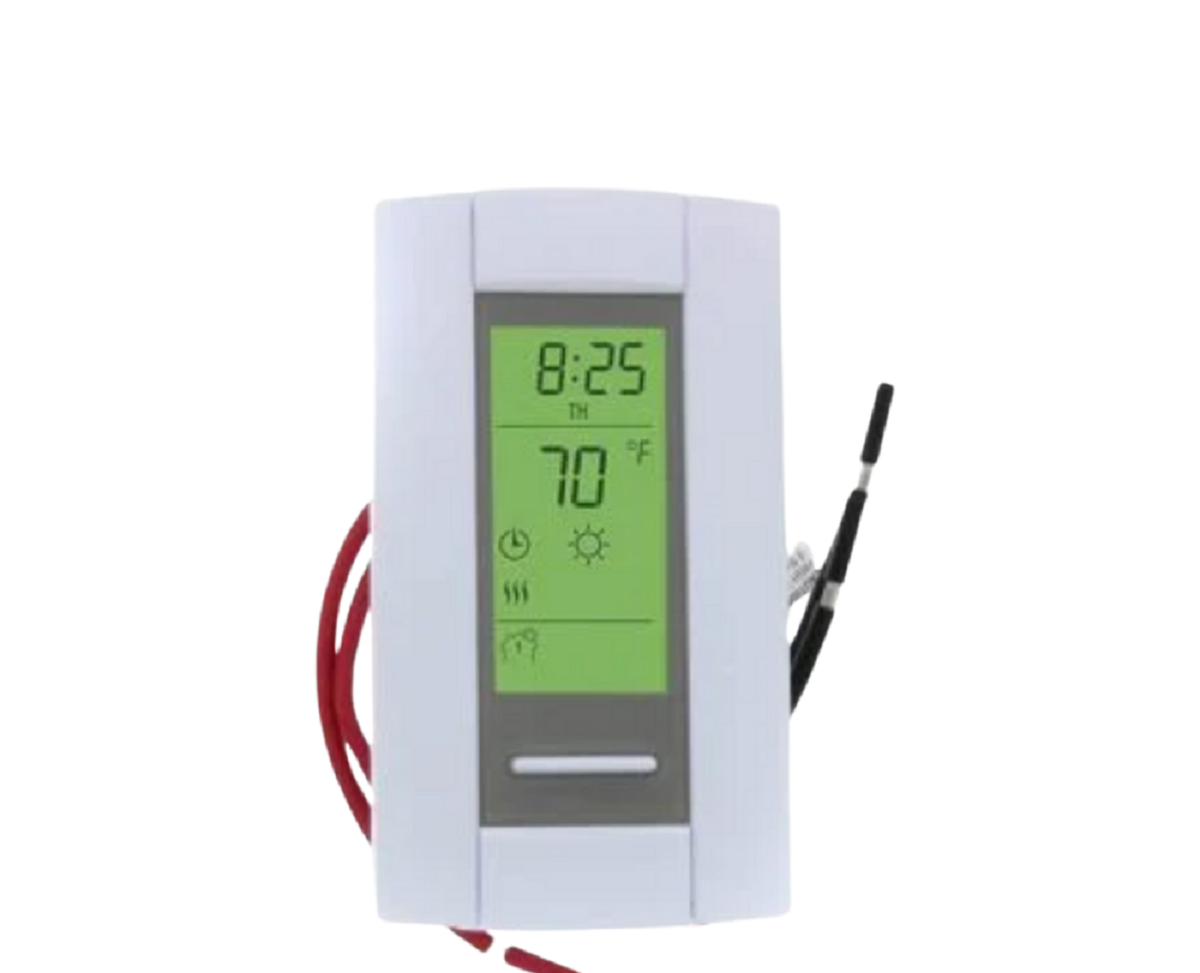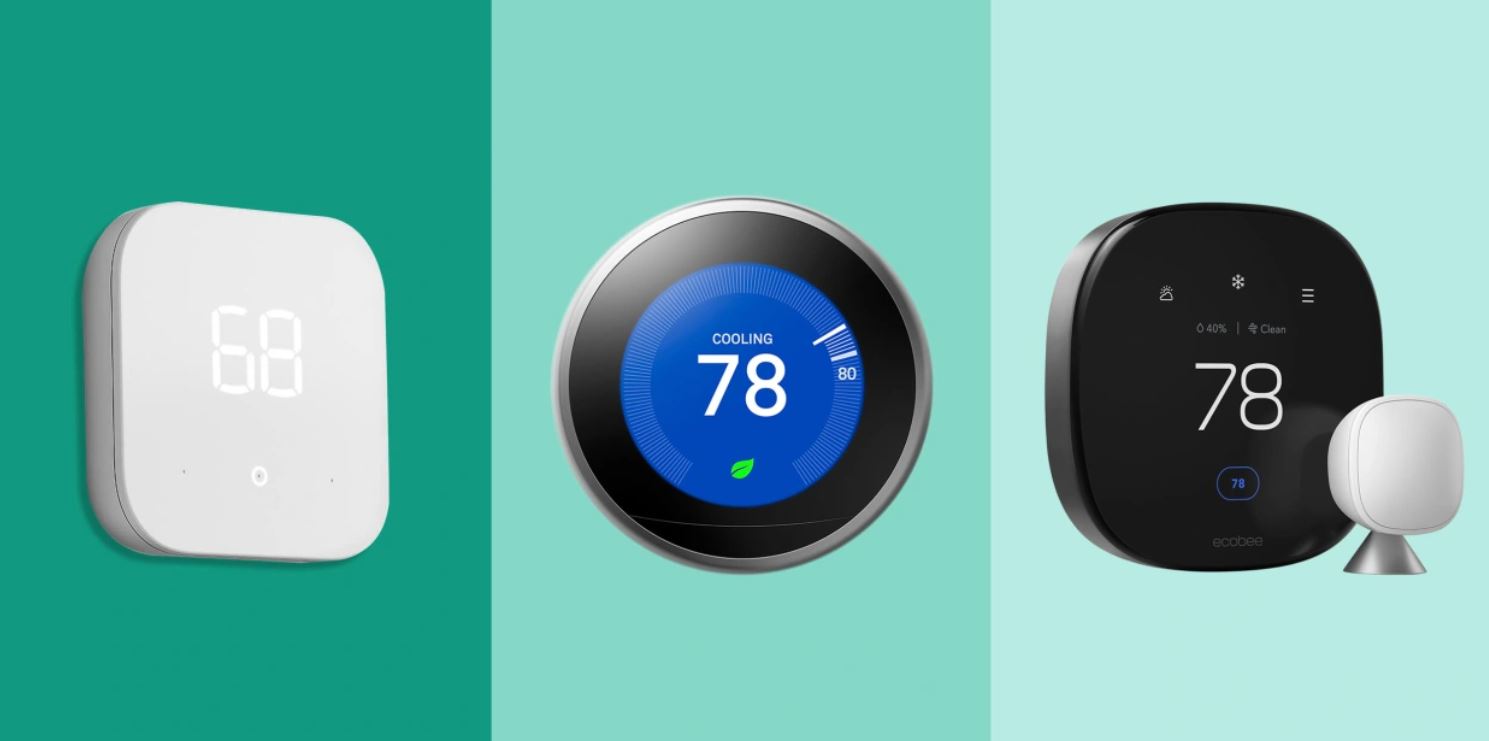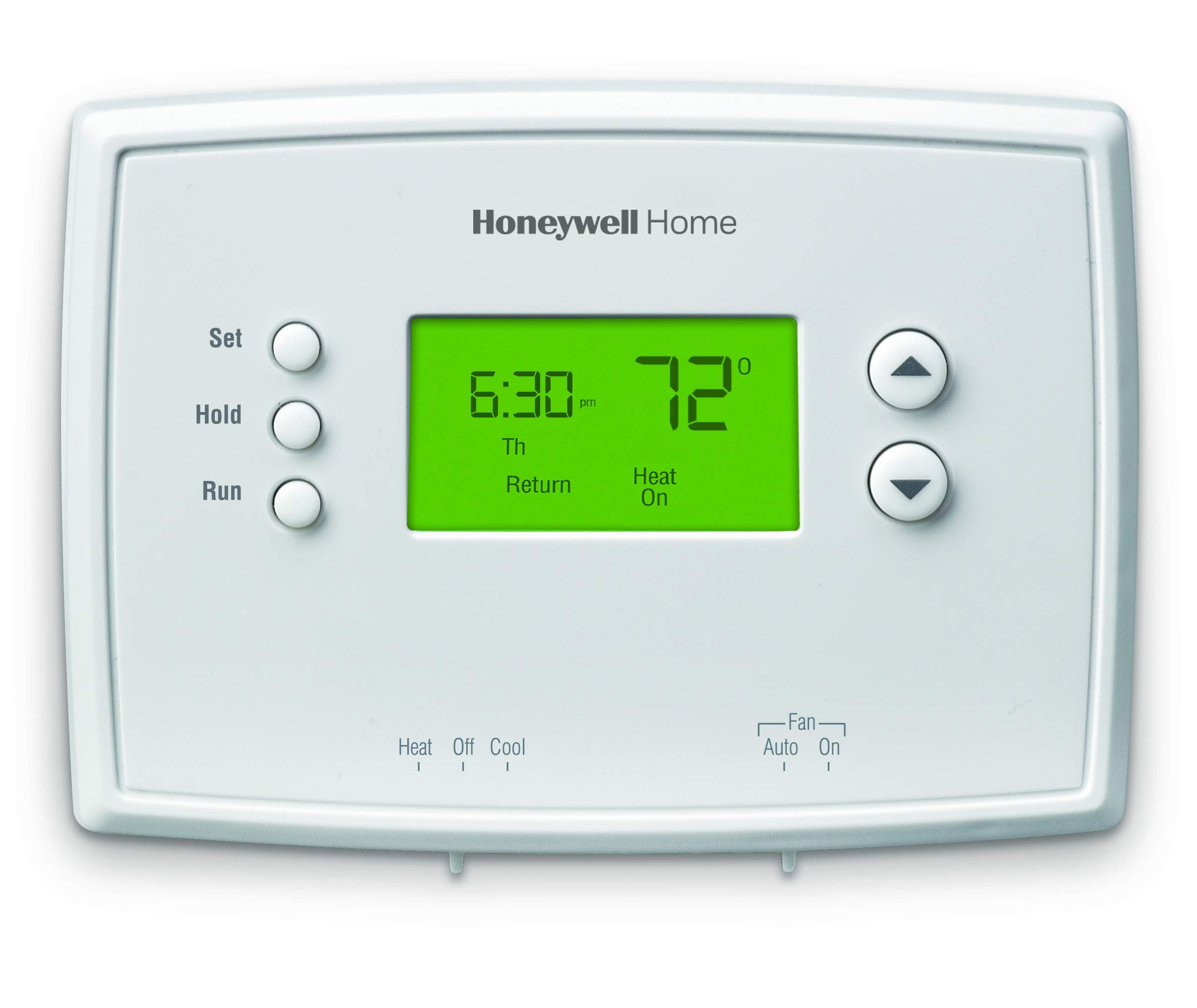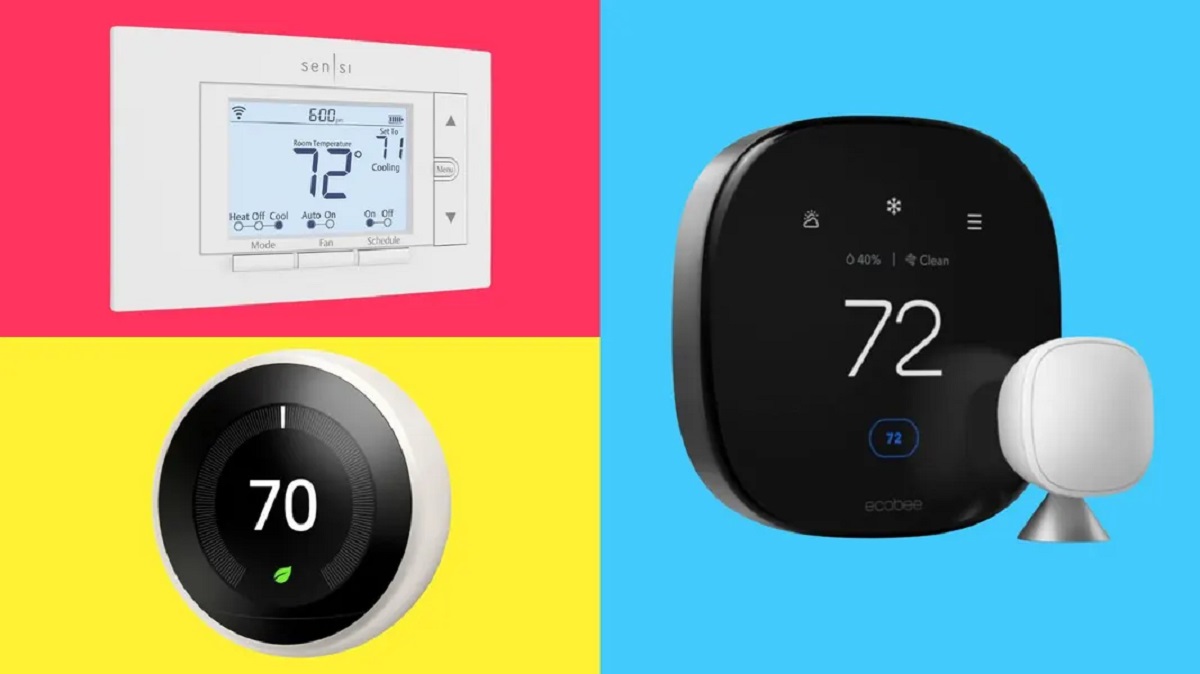Introduction
Welcome to our comprehensive guide on baseboard heater thermostats! If you have a baseboard heating system in your home, you may be familiar with the importance of a thermostat in controlling the temperature and ensuring optimal comfort. A baseboard heater thermostat is a key component that allows you to regulate the heat output of your baseboard heater.
In this article, we will explore how baseboard heater thermostats work, the different types available, their pros and cons, as well as some useful tips for their usage and common troubleshooting techniques. Whether you are a homeowner looking to upgrade your heating system or simply curious to learn about how these thermostats operate, we’ve got you covered.
Having a basic understanding of how your baseboard heater thermostat functions can make a significant difference in managing your home’s heating system efficiently. It can help you maintain a comfortable temperature in each room while also saving energy and reducing your heating bills.
So, join us as we unravel the mysteries of baseboard heater thermostats, providing you with the knowledge and insights to make the most out of this essential component of your heating system.
What is a Baseboard Heater Thermostat?
A baseboard heater thermostat is a device that is designed to control the operation of a baseboard heating system. It allows you to regulate the temperature of a room by turning the heater on and off based on the desired temperature setting. Essentially, it acts as the “brain” of the baseboard heating system, ensuring that the room remains at a comfortable temperature.
Baseboard heater thermostats come in various styles and configurations, but their primary function remains the same. They are typically mounted on a wall and connected to the baseboard heater through electrical wiring.
One of the key features of a baseboard heater thermostat is its temperature sensing capability. It contains a sensor that measures the ambient temperature in the room. When the temperature goes below the set temperature, the thermostat signals the baseboard heater to turn on and start generating heat. Once the room reaches the desired temperature, the thermostat tells the heater to shut off.
In addition to regulating the temperature, some baseboard heater thermostats also offer additional features such as programmable schedules, digital displays, and even smart home integration. These advanced features allow users to set specific temperature settings for different times of the day or remotely control the thermostat through a mobile app.
It’s important to note that baseboard heater thermostats are specifically designed for use with baseboard heating systems and may not be compatible with other types of heaters, such as radiant floor heating or forced-air systems.
In summary, a baseboard heater thermostat is a crucial component of a baseboard heating system. It allows you to control the temperature of a room by turning the heater on and off based on the desired temperature setting. With various styles and features available, you can choose a thermostat that best suits your needs and enhances the comfort and efficiency of your heating system.
The Components of a Baseboard Heater Thermostat
A baseboard heater thermostat consists of several components that work together to regulate the temperature and control the operation of the baseboard heating system. Understanding these components is essential for troubleshooting and maintaining your thermostat. Let’s take a closer look at the key components:
1. Temperature Sensor: The temperature sensor is the core component of the thermostat. It measures the ambient temperature of the room and sends signals to the thermostat to turn the heater on or off based on the desired temperature setting.
2. Control Panel: The control panel is where you can adjust the temperature settings and control other features of the thermostat. It typically includes buttons, knobs, or a digital interface for programming and customization.
3. Relay: The relay is an electronic switch that controls the flow of electricity to the baseboard heater. When the temperature sensor detects that the room temperature is below the desired setpoint, the relay sends a signal to activate the heater. Conversely, when the desired temperature is reached, the relay interrupts the electrical connection, turning off the heater.
4. Power Supply: The thermostat requires a power source to operate. Most baseboard heater thermostats are powered by the same electrical circuit that supplies power to the heating system. However, some thermostats may require batteries or have a separate power source.
5. Display: Many modern thermostats come with a display that shows the current temperature, set temperature, and other information. It allows users to easily monitor and adjust the thermostat settings.
6. Wiring Connections: The thermostat is connected to the baseboard heater through electrical wiring. The specific wiring configuration may vary depending on the thermostat model and the heating system. It’s important to follow the manufacturer’s instructions and consult a professional if you are unsure about the wiring connections.
7. Additional Features: Some baseboard heater thermostats offer additional features such as programmable schedules, digital interfaces, or compatibility with smart home systems. These features provide more advanced control options and convenience.
Understanding the components of a baseboard heater thermostat can help you troubleshoot any issues that may arise and ensure proper operation of your heating system. It’s important to consult the thermostat’s manual for detailed information on its specific components and their functions.
How Does a Baseboard Heater Thermostat Work?
A baseboard heater thermostat works by continuously monitoring the ambient temperature of a room and signaling the baseboard heater to turn on or off accordingly. Understanding the basic functioning of a thermostat can help you optimize its performance and maintain a comfortable temperature in your living space.
Here is a breakdown of how a baseboard heater thermostat works:
1. Temperature Sensing: The thermostat is equipped with a temperature sensor that measures the current temperature of the room. This sensor is typically located inside the thermostat or in a separate external probe that can be placed in the desired location.
2. Temperature Comparison: The thermostat compares the temperature reading from the sensor with the desired set temperature that you have selected. If the current temperature is below the set temperature, the thermostat activates the baseboard heater to generate heat.
3. Relay Control: Once the thermostat detects that the room temperature is below the desired set temperature, it sends an electrical signal to a relay. The relay then allows electricity to flow to the baseboard heater, activating it and initiating the heating process.
4. Heating Cycle: As the baseboard heater is turned on, it starts to generate heat, gradually increasing the temperature in the room. The thermostat continues to monitor the temperature and compares it with the set temperature throughout the heating cycle.
5. Temperature Regulation: Once the room temperature reaches or exceeds the desired set temperature, the thermostat sends a signal to the relay to interrupt the electrical connection to the baseboard heater. This action effectively shuts off the heater, preventing further heating and maintaining a consistent temperature.
6. Cycling On and Off: As the room temperature fluctuates, the thermostat continuously monitors it to ensure that it remains within the desired range. If the temperature drops below the set temperature, the thermostat will repeat the process, activating the heater to warm the room until the desired temperature is reached again.
The precise functioning of a baseboard heater thermostat may vary depending on the specific model and features. Some thermostats offer additional capabilities such as programmable schedules, allowing you to set different temperature settings for different times of the day. Others may integrate with smart home systems, enabling remote control and monitoring via mobile devices.
Understanding how a baseboard heater thermostat works allows you to effectively manage your heating system, ensuring comfort and energy efficiency in your home. It’s important to refer to the manufacturer’s instructions for your specific thermostat model to maximize its functionality and make any necessary adjustments.
Types of Baseboard Heater Thermostats
Baseboard heater thermostats come in various types, each offering different features and functionalities to accommodate your heating needs. Understanding the different types can help you choose the right thermostat for your baseboard heating system. Let’s explore some common types of baseboard heater thermostats:
1. Line-Voltage Thermostats: Line-voltage thermostats are the most common type of thermostats used with baseboard heaters. They are wired directly into the electrical circuit that powers the heater. These thermostats can handle the high voltage required to control the heating element. Line-voltage thermostats provide precise temperature control and are generally more reliable.
2. Low-Voltage Thermostats: Low-voltage thermostats require a separate transformer to convert the line voltage into a lower voltage (usually 24 volts). These thermostats are often used in homes with central heating systems that also have a baseboard heater. Low-voltage thermostats offer more flexibility in terms of installation and can be easily integrated with other heating systems.
3. Programmable Thermostats: Programmable thermostats allow you to set different temperature schedules for different times of the day. They offer the convenience of automatically adjusting the temperature based on your preferred settings. This feature helps to save energy by reducing heating when the room is not in use or by gradually adjusting the temperature to avoid sudden temperature changes.
4. Digital Thermostats: Digital thermostats provide a digital display for temperature control and offer more precise temperature settings compared to analog thermostats. They often have additional features such as backlighting, touchscreen interfaces, and user-friendly programming options.
5. Wi-Fi-enabled Thermostats: Wi-Fi-enabled thermostats are becoming increasingly popular due to their ability to connect to your home’s Wi-Fi network. These thermostats can be controlled remotely using a smartphone app or through voice commands with compatible smart home systems like Alexa or Google Assistant. They offer convenience and flexibility, allowing you to monitor and adjust the temperature from anywhere.
6. Non-programmable Manual Thermostats: Non-programmable manual thermostats are simple and easy to use. They consist of a dial or lever that you manually adjust to set the desired temperature. While lacking advanced programming features, they are cost-effective options for basic temperature control.
It’s important to consider your specific heating requirements, budget, and desired features when choosing a baseboard heater thermostat. Consult the manufacturer’s guidelines and consult with a professional if you are unsure about compatibility or installation requirements for your heating system.
By selecting the right type of thermostat, you can ensure efficient and reliable temperature control while maximizing comfort and energy savings in your home.
Pros and Cons of Baseboard Heater Thermostats
Baseboard heater thermostats offer several advantages and disadvantages when it comes to controlling the temperature in your home. Understanding the pros and cons can help you make an informed decision when choosing a thermostat for your baseboard heating system. Let’s explore them:
Pros:
1. Precision Temperature Control: Baseboard heater thermostats allow for precise temperature control, allowing you to maintain a comfortable environment in each room. You can set the desired temperature and the thermostat will regulate the heater’s operation accordingly.
2. Energy Efficiency: With the ability to set specific temperature schedules, programmable thermostats help optimize energy usage by reducing heating when it’s not needed. This can result in energy savings and lower heating bills.
3. Zonal Heating: Baseboard heaters with individual thermostats in each room provide zonal heating, where you have control over the temperature in different areas of your home. This allows you to customize the heating based on the specific needs and preferences of each room.
4. Easy Installation and Compatibility: Baseboard heater thermostats are usually easy to install and are compatible with most baseboard heating systems. They can be retrofitted to replace existing thermostats without major modifications.
5. Additional Features: Some modern thermostats offer advanced features such as Wi-Fi connectivity, mobile app control, and integration with smart home systems. These features provide convenience and remote access to temperature control in your home.
Cons:
1. Initial Cost: Baseboard heater thermostats, especially those with advanced features, may have a higher upfront cost compared to basic thermostats. However, the long-term energy savings can offset the initial investment.
2. Complex Programming: Programmable thermostats can have complex programming options, requiring some time and effort to set up the temperature schedules. However, once programmed, they provide automated temperature control.
3. Compatibility Limitations: Some thermostats may be specific to certain baseboard heater models or heating systems, limiting their compatibility options. It’s important to ensure compatibility before purchasing a thermostat.
4. Reliability Concerns: While baseboard heater thermostats are generally reliable, malfunctions or failures can occur. It’s important to choose a reputable brand and follow proper installation and maintenance guidelines.
5. Limited Functions for Basic Models: Basic manual thermostats may have limited features and functionality compared to more advanced models. They may lack programmable or smart capabilities, offering basic temperature control only.
Ultimately, the choice of a baseboard heater thermostat depends on your specific needs, budget, and desired features. Consider the pros and cons to find a thermostat that balances functionality, energy efficiency, and ease of use for your baseboard heating system.
Tips for Using a Baseboard Heater Thermostat
Using a baseboard heater thermostat effectively can help you optimize comfort and energy efficiency in your home. Here are some tips to ensure you get the most out of your thermostat:
1. Set the Temperature Appropriately: Choose a comfortable temperature for each room. Avoid setting the thermostat too high, as it can lead to excessive energy consumption. Each degree lower can result in energy savings. A recommended temperature range is typically between 68-72 degrees Fahrenheit (20-22 degrees Celsius).
2. Consider Zonal Heating: If your home has multiple baseboard heaters with individual thermostats, utilize zonal heating by adjusting the temperature settings for each room. This allows you to customize the heating based on specific occupancy and preferences in different areas of your home.
3. Utilize Programmable Features: If your thermostat has programmable capabilities, take advantage of setting different temperature schedules for different times of the day. Lower the temperature when you’re not at home or during sleeping hours to reduce energy consumption.
4. Avoid Frequent Temperature Adjustments: Constantly adjusting the thermostat up and down can lead to inefficient heating and increased energy usage. Instead, choose a desired temperature and allow the thermostat to maintain a consistent comfort level.
5. Regularly Clean and Dust: Dust can accumulate on the thermostat’s temperature sensor, affecting its accuracy. Regularly clean and dust the thermostat to ensure reliable temperature readings.
6. Keep Obstacles Away: Avoid placing furniture or curtains in front of the thermostat, as it can block the airflow and affect the ambient temperature reading. Keep the area around the thermostat clear for accurate temperature sensing.
7. Check for Drafts: Inspect the window and door frames for any drafts, as they can affect the thermostat’s temperature readings. Sealing any leaks or drafts will help the thermostat maintain more accurate temperature control.
8. Monitor and Adjust for Seasonal Changes: As the seasons change, monitor the temperature settings and make necessary adjustments. Warmer seasons may require less heating, while colder seasons may require a higher temperature setting.
9. Follow Manufacturer’s Instructions: Refer to the manufacturer’s guidelines for specific instruction on operating and programming your thermostat. They can provide valuable information on maintenance, troubleshooting, and optimal performance.
10. Consider Smart Thermostat Integration: If you have a smart home system, consider integrating your baseboard heater thermostat to control it remotely using a mobile device or through voice commands. This allows greater convenience and flexibility in managing your heating system.
By following these tips, you can ensure efficient and effective use of your baseboard heater thermostat, improving comfort and reducing energy consumption in your home. Experiment with different settings to find the optimal temperature for your needs while keeping energy efficiency in mind.
Common Troubleshooting Tips for Baseboard Heater Thermostats
Baseboard heater thermostats, like any other electronic devices, may encounter issues from time to time. However, many common problems can be resolved with simple troubleshooting steps. Here are some common troubleshooting tips to help you address common issues with your baseboard heater thermostat:
1. No Power: If the thermostat is not receiving power, check if the circuit breaker for the thermostat is tripped. Reset the breaker if necessary. Also, ensure that the thermostat is securely connected to the power source.
2. Inaccurate Temperature Reading: If the thermostat is displaying incorrect temperature readings, clean the temperature sensor with a soft cloth to remove any dust or debris. Check for any obstructions that may affect the sensor’s accuracy, such as furniture or curtains.
3. Uneven Heating: If certain rooms or areas are not heating adequately, check for obstructions that may block the airflow from the baseboard heater. Make sure there are no furniture or drapes blocking the heat from distributing evenly throughout the room.
4. Unresponsive Thermostat: If the thermostat is not responding to temperature adjustments or not turning on the heater, try replacing the batteries (if applicable) or ensuring a proper electrical connection. If the issue persists, consult the manufacturer’s troubleshooting guide or contact a professional for assistance.
5. Incorrect Temperature Settings: Double-check that the thermostat is set to the desired temperature. Verify that any programmable schedules are correctly programmed and that the thermostat’s settings are not accidentally changed.
6. Frequent Cycling On and Off: Constant cycling could indicate an issue with the thermostat’s temperature sensor or the wiring connections. Inspect the wiring and ensure that the connections are secure. If the problem persists, it may require professional inspection or replacement.
7. Wi-Fi Connectivity Issues: If you are experiencing connectivity issues with a Wi-Fi-enabled thermostat, ensure that the thermostat is within range of the Wi-Fi signal and that the network credentials are correctly entered. Resetting the Wi-Fi connection or restarting the thermostat might also help resolve the issue.
8. Lack of Heating: If the baseboard heater is not generating any heat, check that the heater itself is functioning properly. Ensure that the circuit breaker for the heater is not tripped and that the heater is connected to a power source. If the problem persists, consult a professional technician to inspect the heater and thermostat.
9. Erratic Temperature Control: If the temperature control seems erratic, it could indicate a problem with the thermostat’s internal components. Resetting the thermostat or performing a factory reset might help resolve the issue. If it continues, consider contacting the manufacturer for further assistance.
It’s worth noting that if you are uncomfortable performing any troubleshooting steps or if the issue persists despite your attempts, it is recommended to consult a professional HVAC technician for further diagnosis and repair. They have the expertise to diagnose and fix complex problems with baseboard heater thermostats and the associated heating system.
Conclusion
Baseboard heater thermostats play a crucial role in controlling the temperature and ensuring optimal comfort in your home. With their ability to regulate the operation of the baseboard heating system, you can customize temperature settings, save energy, and maintain a cozy environment in each room.
In this comprehensive guide, we’ve discussed what baseboard heater thermostats are and how they work, highlighting their various components, types, pros, and cons. We’ve also provided useful tips for using and troubleshooting these thermostats to maximize their efficiency and performance.
Remember to set the temperature appropriately, consider zonal heating, and take advantage of programmable features to save energy and enhance comfort. Regularly clean and dust the thermostat, keep obstacles away, and monitor for any drafts or leaks that could affect its performance. Follow the manufacturer’s instructions, and consult a professional for complex issues or installations.
By understanding and effectively using your baseboard heater thermostat, you can enjoy a comfortable home environment while optimizing energy usage and reducing heating costs. So, take control of your heating system and make the most out of your baseboard heater thermostat!







